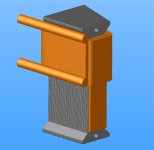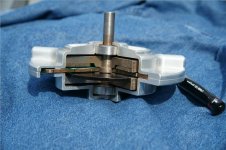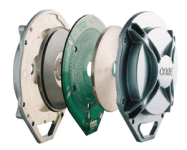Thanks Richard. That's what I was thinking. Feeding it through on the other side, the current will be running in the corresponding direction for the adjacent coil, too (AaA, BbB etc..) . I'm worried that, with only 4 turns per slot, an extra 1/2 turn is a relatively large difference...fechter said:If the wire passes through the slot, it will be 1/2 turn, negating 1/2 turn of the strip. Running it the other way will add 1/2 turn, which would probably be better but you have to be sure it won't fight the BEMF from the other windings.
But, on the other hand, connecting the modules on the outside increases the overall diameter [and one of the reasons for exposing the endturns through the case was to maximise the mean airgap radius...], it also increases the length of the links between the phase groups.Making the connection on the outside to maintain an even turns count would be the best bet.
Hmmmm........





